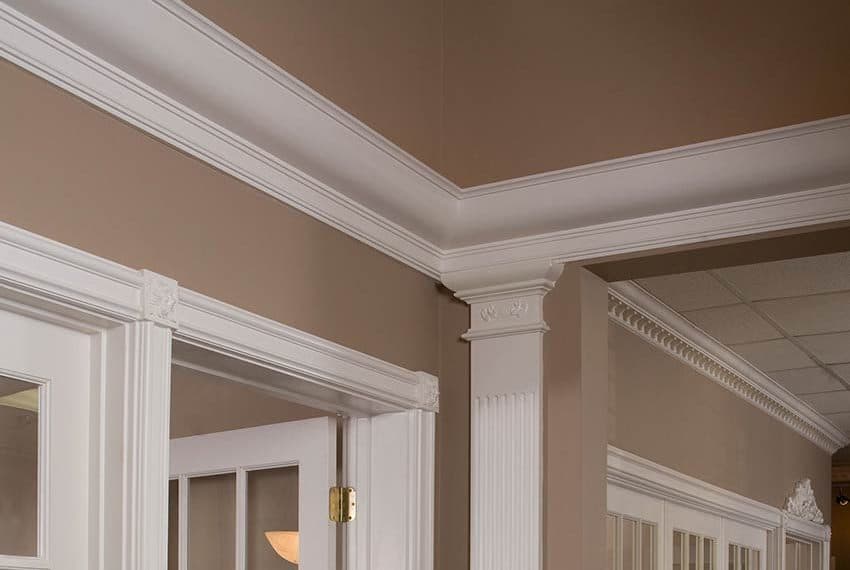Decorative Molding
Decorative moldings are architectural details installed to trim floors, doors, windows, walls, and ceilings. If carefully installed, they can enhance any décor and increase the value of any home. They will help to express your sense of style and give a finished look to your room. Made of hardwood, soft wood, molded wood product or of resin materials, moldings are used to hide shoddy construction, give visual enhancement, or add a period look.
1. Around the Ceiling
Known popularly as crown molding, cornice molding is one of the most sought-after architectural moldings used today. A shaped piece of wood is installed at the intersection of the wall and ceiling. The molding can range from 3†to 15†depending on the size of the room and style of décor.
2. Around a Window
Framing a window does a lot to dress it up and make it look finished. This decorative molding is called casing, and is used to hide the gap between the window frame and wall. Casings measure anywhere from 2†to 8†and do a lot to dress up a window. A sill and apron are usually installed at the bottom of the window.
3. Around a Door
Casing to match the window casing is also installed around a door frame to complete the look in a room. This molding covers gaps in installation between the frame of the door and the wall.
4. Along the Floor
A baseboard is applied where the wall and floor meet. While especially decorative and grounding, this molding is used to conceal the gap between the two surfaces, and also helps to protect the wall from scuffs caused by shoes, furniture, or a vacuum. 2†to 8†is a common range of heights for baseboard molding.
5. On a Door
A plain, flat door can be dressed up easily with molding installed on the face to form panels. Generally 2 outlined sections, top and bottom, are used for a design. This simple transformation is very inexpensive and the molding can be nailed or glued on and then painted to match the door or in contrast.
6. Along a Wall
A chair rail is a strip of wood installed horizontally over the wall at a height to protect a wall from being damaged by a chair. It divides the top of the wall from the lower, and is often used to cover the edge of wainscoting panels or wallpaper.
7. On a Wall
Inexpensive strips of molding costing as little as 5 cents a foot measuring from 1†to 3†diameter, are arranged to frame areas of a wall, forming the look of recessed panels. The molding and inner section can be painted one color and the outer area another for a dramatic look, or the whole area can be one color to achieve a subtle architectural transformation.
8. Framing a Bookcase
Simple wood molding can transform a basic, boring bookcase into a substantial piece of furniture with crown molding around the top, flat shaped strips on the sides and defining the shelves, and baseboards around the bottom. The pieces can be glued on or nailed. Then paint the whole piece to match, and no one will be the wiser.
9. On a Ceiling
Traditional ceiling medallions were painstakingly carved or molded of plaster. You can achieve the same look with new medallions made of polyurethane foam or polystyrene. The pieces are simply attached to the ceiling and painted to blend. They create a dramatic focal point in a formal room and provide a mounting area for a chandelier or other ceiling fixture.

